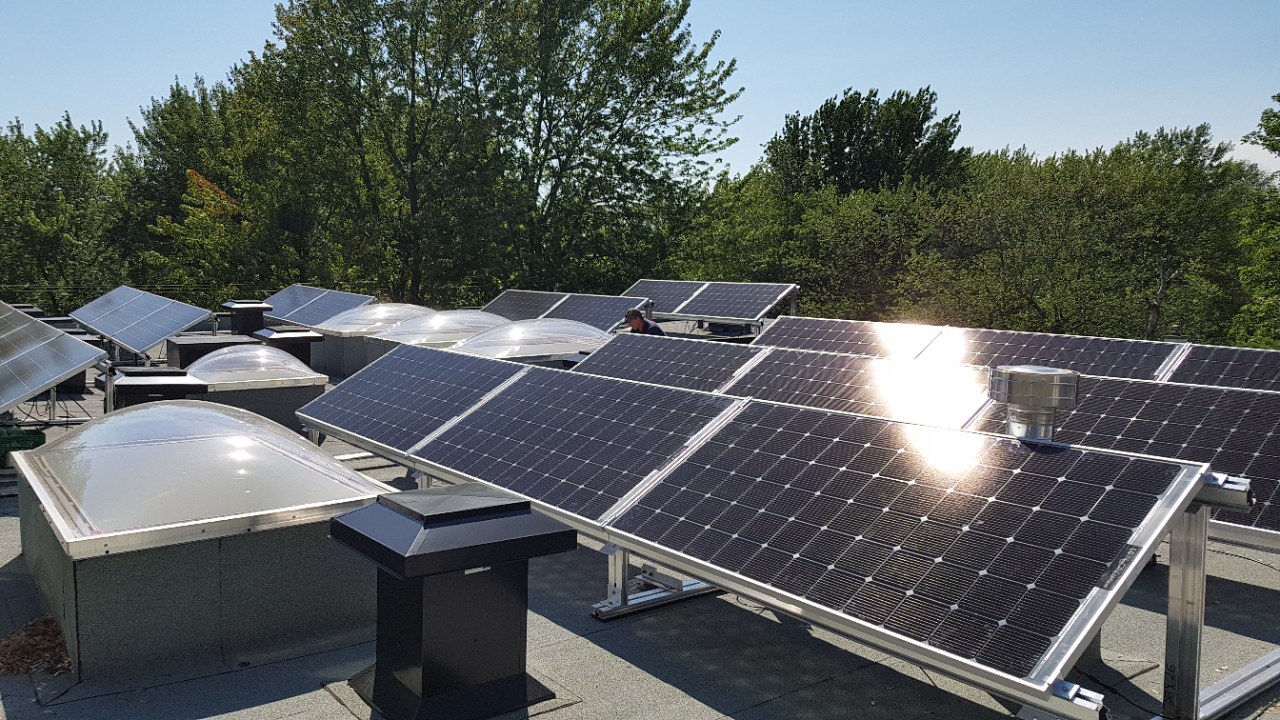How to make solar energy more competitive with bifacial PVs
By Natalie Cajic Innovations in solar photovoltaic technology have made solar energy more competitive with fossil fuels in many areas of the world, but manufacturers are finding it constantly more complex to create better solar cells.
Bifacial solar modules may be the next real leap in PV technology.
Bifacial PV
Bifacial solar cells are made of the same material as standard solar cells, silicon, and thus present no technological risk. The main difference with standard cells is that bifacial cells use a double PN junction.
This technology presents an opportunity to increase cost-efficiency of solar.
Increased output power
Henry Schriemer of the University of Ottawa explains why double-sided modules can improve module efficiency:
“Both the monofacial and the bifacial modules see the same amount of light on their upward facing side, but the bifacial module also sees all the diffuse light that is reflected on its backside.
Bifacial energy gain will notably exceed the small extra cost of making bifacial panels.
I foresee a point where no one will be using standard monofacial modules anymore.”
Depending on the reflective surface and the solar array design, bifacial PV can generate over 20 per cent more than standard PV.
Amplifying light captured
Therefore, one of the key factors in optimizing output of bifacial PV modules is ensuring the amount of light captured by the backside of the module is amplified.
Opsun System Inc. designs and manufactures mounting systems for PV installations for both roof top and ground mount. Alexandre Gilbert-Vanasse, vice president of development, offers the following guidelines to maximize the benefits using bifacial solar modules.
Tilt should be increased as much as possible so as to maximize the amount of light the back sides receives.
Elevate the modules as much as possible. The higher the modules are from the roof surface, the more diffuse light gets reflected on the modules' backside.
Avoid using wind deflectors because of shadows they may cast under the modules.
Avoid using rails under the backside of the module. Rails should be placed at the extremities of the bifacial PV modules.
Anchored systems are preferred as ballasts can block reflections.
Bifacial PV installations are particularly suited to Canadian locations because of our snowy winters.
Snow has a high reflectivity (albedo) and the backside cells will heat up as soon as the sun rises, allowing snow on the modules to melt, further increasing their effectiveness.
In fact, if possible, Gilbert-Vanasse suggests using white or white coated roofing membranes, commonly called ‘cool roofing'. “White roofs are not much more expensive than standard roofing and they can reach as much as 85 per cent reflectivity,” he says.
Geoff Atkins, from Silfab, the leading manufacturer of bifacial PV modules in Canada, explains “bifacial modules' cost is largely offset by their energy gain and optimized use of diffuse light, resulting in higher return on investment when using bifacial PV modules”.
For a successful bifacial PV project, bifacial racking design should be done by specialists, like the Opsun team, to assure the PV structure is optimized.
